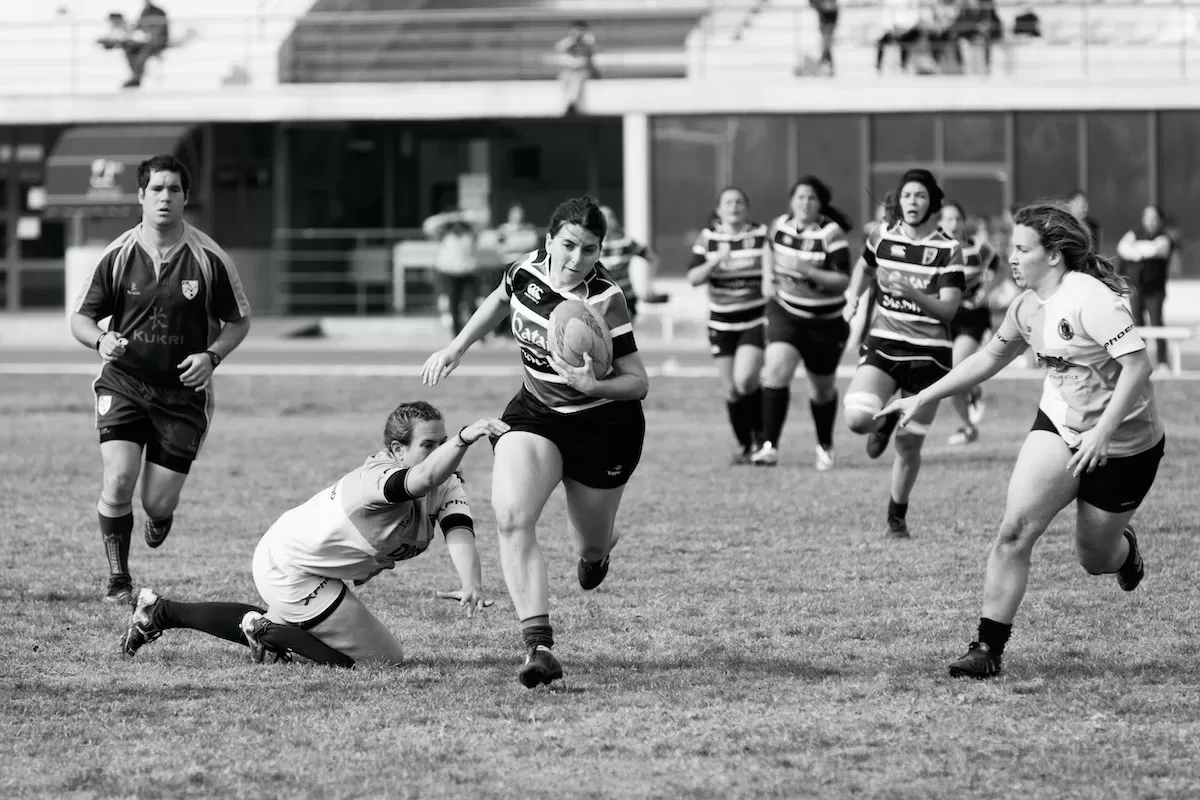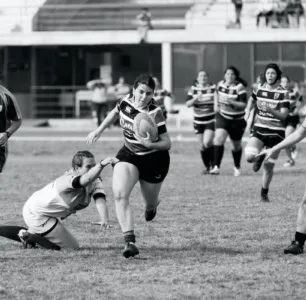Discover the strategic brilliance of the chip and chase in rugby, a skill that can turn the tide of a game and leave opponents stunned. Learn how this technique combines precision, timing, and courage, and how it has become an integral part of the modern rugby playbook.
Rugby, a game known for its physicality, tactical prowess, and electrifying moments, has a plethora of moves and techniques that keep fans on the edge of their seats. Among these, the chip and chase stands out as a skill that epitomizes the artistry of the sport. Combining precision, timing, and courage, the chip and chase has become an integral part of the modern rugby playbook. In this article, we delve into the intricacies of this game-changing move and explore how it has the power to turn the tide of a game.
The chip and chase is a maneuver that requires split-second decision-making and flawless execution. It involves kicking the ball over the opposition’s defensive line, sprinting past the defenders, and reclaiming the ball in the hope of scoring or gaining valuable field position. When executed to perfection, it leaves opponents stunned and spectators in awe.
One of the key elements of a successful chip and chase is timing. It requires a deep understanding of the game, the positioning of both teammates and opponents, and the ability to exploit openings in the defense. A player must make a quick assessment of the situation, identifying the right moment to execute the kick, and then swiftly transition into a sprint to chase down the ball.
The chip and chase is a move that demands precise kicking skills. A well-executed chip kick has just the right trajectory, distance, and height to clear the defensive line and land in a favorable spot for the chaser. It requires hours of practice to develop the touch and finesse needed to control the ball’s flight and ensure it evades the outstretched arms of the opposition. Mastering this aspect of the chip and chase can be the difference between a successful play and a turnover.
Courage is another essential ingredient in executing the chip and chase. The player attempting the move must possess the confidence to take calculated risks and believe in their ability to outpace and outsmart the defenders. It takes bravery to put the ball in the air, knowing that any mistimed or misjudged kick could lead to a turnover or a counter-attack from the opposition. The willingness to take on this challenge separates the great players from the good ones.
To execute the chip and chase successfully, teamwork and communication are paramount. The chaser needs to have a mutual understanding with their teammates, particularly the kicker. Both players must anticipate each other’s movements, developing an instinctive connection that allows for split-second decision-making. This coordination can create devastating attacking opportunities, catching the opposition off guard and opening up space on the field.
The chip and chase can be particularly effective in breaking down well-organized defenses. When a team is facing a solid defensive line that is difficult to breach through conventional means, the chip and chase can provide a much-needed element of surprise. By quickly changing the dynamics of the game, it forces the opposition to adapt on the fly and disrupts their defensive structure. This strategic shift can create scoring opportunities and momentum swings that can turn the tide of a match.
Professional rugby has witnessed some iconic chip and chase moments that have shaped the outcome of crucial matches. These moments become etched in the collective memory of rugby enthusiasts, showcasing the impact of this move like Stuart Hogg’s breathtaking chip and chase try against Ireland in the 2018 Six Nations Championship, these instances exemplify the sheer brilliance and game-changing potential of the chip and chase.
To excel at the chip and chase, players need to develop a strong rugby IQ. Understanding the ebb and flow of the game, reading the defensive patterns, and recognizing the optimal moments to execute the move are all critical aspects. Analyzing game footage, studying opponents’ tendencies, and learning from experienced players can help individuals refine their decision-making and enhance their ability to capitalize on the chip and chase.
Moreover, physical fitness plays a significant role in executing the chip and chase effectively. Players must possess the speed and agility to outrun opponents and reach the ball before it touches the ground. Conditioning drills and speed training become essential components of a player’s preparation, enabling them to maintain their explosiveness and endurance throughout a match.
In conclusion, the chip and chase is a breathtaking and game-changing move in the sport of rugby. Its execution requires a blend of skill, timing, courage, and teamwork. Mastering the art of the chip and chase can provide players with a potent weapon to dismantle even the most formidable defenses. Whether it is a decisive try or a valuable territorial gain, the chip and chase has the potential to leave opponents in awe and solidify a player’s status as a true artist of the game. So, next time you watch a rugby match, keep an eye out for the exhilarating moments when a player defies expectations and executes a flawless chip and chase, for it is in those moments that rugby truly shines.

